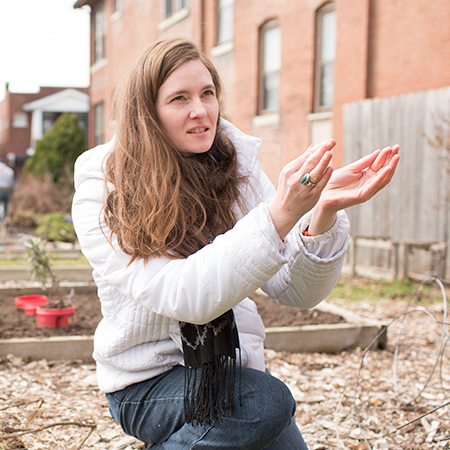Interactive Living Landscape

Maria Stoica, graduate research assistant in the School of Engineering; Andrea Godshalk, graduate student in Landscape Architecture; Sam Fox School; Ginny Spernoga, graduate student in Public Health; Jason West, graduate student in University College
In cities throughout the world, years of contamination have rendered large swaths of land unfit for habitation, development or food production.
Interactive Living Landscape aims to demonstrate that vacant urban lots can be productively landscaped in ways that not only heal the soil, but also help improve the health of the wider community.
The project is a collaboration between four students representing a range of disciplines. Andrea Godshalk is a master’s candidate in landscape architecture in the Sam Fox School of Design & Visual Arts. Maria Stoica is a doctoral candidate in Energy, Environmental & Chemical Engineering. Ginny Spernoga is pursuing a Master’s in Public Health. Jason West studies sustainability through University College.
The four hope to promote healthy soil by removing hazards, conserving site resources and fostering a native habitat. For example, the use of phytoremediation techniques, along with permaculture and landscape design principles, allows contaminants to be removed in a non-intrusive, aesthetic way. The result is a restorative greenspace that increases land value while engaging local populations.
“We will test and compare the ability of native and non-native plant communities to improve the health of the urban soil by implementing an interactive living landscape that doubles as a community gathering space and addresses the deficiencies and contaminants present,” the group explains. “Regular monitoring of soil composition will be used as a tool for dynamically tailoring natural elements, and rainwater will be collected and stored in a rain garden.”
